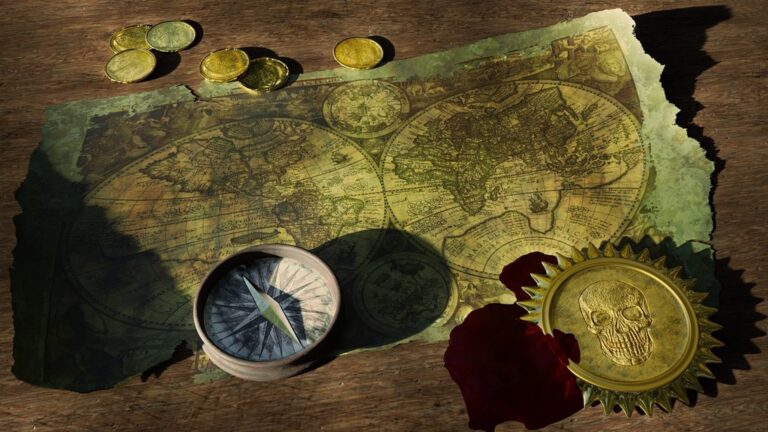5 Mapping Styles That Invite Client Collaboration and Transform Projects
Why it matters: Traditional mapping methods often leave clients feeling disconnected from the design process — but collaborative mapping styles transform passive observers into active partners.
The big picture: When you involve clients directly in mapping exercises you’re not just gathering information — you’re building trust and ensuring the final solution truly meets their needs.
What’s next: Five specific mapping techniques can turn your next client meeting from a one-way presentation into a dynamic collaborative session that produces better outcomes for everyone involved.
Disclosure: As an Amazon Associate, this site earns from qualifying purchases. Thank you!
Visual Mind Mapping for Creative Brainstorming
Visual mind mapping transforms abstract client concepts into tangible, collaborative frameworks that spark creative solutions. You’ll discover how this dynamic approach encourages active participation while maintaining clear project direction.
Breaking Down Complex Ideas Into Digestible Visual Elements
Complex client requirements become manageable when you break them into visual branches radiating from central themes. Start with your client’s main objective at the center, then branch outward with subtopics like user needs, technical constraints, and business goals. Use simple icons, shapes, and connecting lines to represent relationships between different elements. This visual hierarchy helps clients see how individual components connect to their overall vision, making abstract concepts concrete and actionable.
Encouraging Client Input Through Color-Coded Themes
Color-coding transforms mind maps into collaborative canvases where clients feel empowered to contribute meaningfully. Assign specific colors to different stakeholders, departments, or priority levels—blue for technical requirements, green for user experience, red for critical issues. Give clients colored markers or digital tools to add their own insights directly onto the map. This visual ownership creates immediate buy-in while ensuring their unique perspectives are captured and valued throughout the brainstorming process.
This 40-count set of Crayola Ultra Clean Washable Markers delivers vibrant color for all art projects. Easily washes from skin, clothing, and painted walls, making them perfect for kids ages 3 and up.
Using Digital Tools to Enable Real-Time Collaboration
Digital mind mapping platforms like Miro, Lucidchart, and MindMeister allow clients to participate actively during virtual sessions or contribute asynchronously between meetings. Share your screen while building maps together, letting clients guide the direction of branches and suggest new connections. Enable simultaneous editing so multiple team members can add ideas, comments, and refinements in real-time. These tools automatically save progress and create shareable links, ensuring everyone stays aligned on the evolving project vision.
Stakeholder Journey Mapping for User-Centered Design
Stakeholder journey mapping transforms static client presentations into dynamic collaborative experiences. You’ll move beyond traditional linear processes to create comprehensive visual narratives that capture every stakeholder’s perspective throughout their interaction with your client’s product or service.
Identifying Key Touchpoints Together With Client Teams
Map touchpoints through guided discovery sessions where client teams actively contribute their domain expertise. You’ll facilitate workshops using digital whiteboards where participants place sticky notes representing customer interactions across different departments. Start with pre-interaction research phases and extend through post-purchase support cycles. This collaborative approach reveals hidden touchpoints that internal teams often overlook while ensuring comprehensive coverage of the customer experience landscape.
Creating Shared Understanding of Customer Pain Points
Transform abstract pain points into visual problem statements that resonate across diverse stakeholder groups. You’ll guide clients through empathy mapping exercises where they document customer emotions, thoughts, and frustrations at each journey stage. Use color-coded severity ratings to prioritize issues collectively. This visualization process helps technical teams understand user frustrations while enabling marketing teams to see operational challenges, creating unified problem-solving approaches.
Building Consensus Through Collaborative Workshops
Facilitate structured workshops where stakeholders vote on priority improvements using dot-voting techniques. You’ll create journey maps that display conflicting viewpoints side-by-side, then guide discussions toward consensus through evidence-based decision making. Use breakout sessions for department-specific insights followed by group synthesis. This collaborative framework ensures all voices contribute to final recommendations while maintaining project momentum through structured agreement processes.
Process Flow Mapping for Operational Transparency
Process flow mapping transforms complex operational sequences into visual narratives that clients can easily understand and actively improve. This collaborative approach breaks down departmental silos while creating shared accountability for workflow optimization.
Documenting Current State Workflows With Client Expertise
Document workflows through guided client walkthroughs where team members demonstrate their actual daily processes rather than theoretical procedures. You’ll capture real-world variations that standard documentation often misses while building client investment in the mapping exercise.
Record decision points and handoff moments during these sessions to identify where information gets lost or delayed. Client expertise reveals unofficial workarounds and communication patterns that significantly impact operational efficiency but rarely appear in formal process documentation.
Identifying Bottlenecks Through Joint Analysis Sessions
Facilitate structured problem identification workshops where client teams analyze their documented workflows using sticky notes and timing exercises. You’ll uncover resource constraints and capacity issues that clients experience daily but haven’t formally recognized as systemic problems.
Map resource allocation patterns collaboratively to reveal where staff time gets consumed by inefficient processes. Joint analysis sessions help clients connect seemingly isolated delays to broader operational challenges while fostering ownership of improvement initiatives.
Co-Creating Future State Solutions
Design iterative solution workshops where clients prototype improved workflows using visual modeling techniques and role-playing exercises. You’ll generate buy-in for process changes while ensuring proposed solutions align with actual operational constraints and company culture.
Build implementation roadmaps together that prioritize quick wins alongside long-term improvements. Co-creation ensures that future state designs remain practical and achievable while incorporating client knowledge about organizational change readiness and resource availability.
Service Blueprint Mapping for Comprehensive Planning
Service blueprint mapping creates a comprehensive view of your service ecosystem by connecting customer-facing interactions with behind-the-scenes operations. This collaborative approach helps clients understand how their internal processes directly impact customer experience.
Aligning Front-Stage and Back-Stage Activities
Map customer touchpoints alongside internal workflows to reveal how back-office processes influence front-stage experiences. You’ll guide clients through identifying which internal activities support each customer interaction, creating visual connections between departments and customer moments. This alignment helps teams understand their role in the broader service delivery system and prioritize improvements that enhance both operational efficiency and customer satisfaction.
Integrating Client Knowledge of Internal Processes
Leverage your client’s deep operational expertise by facilitating sessions where department heads explain their workflows and dependencies. You’ll capture institutional knowledge that external consultants often miss, documenting the informal processes and workarounds that keep operations running. This approach ensures your service blueprint reflects actual practices rather than idealized procedures, creating more accurate and actionable improvement recommendations.
Facilitating Cross-Departmental Collaboration
Break down organizational silos by bringing together representatives from different departments to map their interconnected processes. You’ll moderate discussions where IT, operations, customer service, and management teams identify shared touchpoints and dependencies. This collaborative mapping reveals communication gaps and coordination opportunities that individual departments can’t see alone, fostering alignment around customer-centric improvements.
Affinity Mapping for Data-Driven Insights
You’ll transform scattered research data into actionable insights by engaging clients in collaborative pattern recognition exercises. This method turns overwhelming information into organized themes that guide strategic decisions.
Organizing Research Findings Through Group Exercises
Creating structured sorting sessions helps clients categorize research data into meaningful clusters. You’ll guide teams through physical or digital card sorting exercises where stakeholders group similar findings together. Start with individual sorting rounds where each participant organizes data points independently. Then facilitate group discussions to merge individual perspectives into unified categories. This approach ensures multiple viewpoints contribute to the final organization while building consensus around research themes.
Enabling Client Teams to Spot Patterns Together
Facilitating collaborative pattern identification empowers clients to discover insights within their organized data clusters. You’ll lead sessions where team members examine grouped findings to identify recurring themes and unexpected connections. Use guided questioning techniques to help participants articulate what they’re observing across different data sets. Document emerging patterns on shared boards where everyone can contribute observations. This process transforms raw research into strategic intelligence that clients personally validate.
Building Shared Ownership of Discovery Outcomes
Establishing collective accountability for research insights ensures clients remain invested in implementing findings. You’ll structure sessions where participants collectively name themes, define implications, and prioritize action items. Create documentation templates that capture both the insights and the team members who contributed to each discovery. Schedule follow-up sessions where original participants review progress and refine interpretations. This ownership model transforms research findings from external recommendations into internal strategic initiatives.
Conclusion
These five collaborative mapping techniques transform your client relationships from passive presentations to active partnerships. When you involve clients directly in the mapping process you’re not just creating better documentation—you’re building trust and ensuring buy-in for your solutions.
Your clients become invested stakeholders rather than distant observers. They contribute their expertise understand the connections between different elements and take ownership of the outcomes. This collaborative approach leads to more accurate mappings faster implementation and stronger long-term client relationships.
The key lies in choosing the right mapping style for each project phase and client need. Whether you’re exploring initial concepts or optimizing complex processes these techniques ensure your clients remain engaged throughout the entire journey.
Frequently Asked Questions
What are collaborative mapping methods in client interactions?
Collaborative mapping methods are interactive techniques that involve clients directly in the design and problem-solving process. Unlike traditional mapping where clients remain passive observers, these methods encourage active participation through visual exercises like mind mapping, journey mapping, and process flows. This approach builds trust, ensures solutions align with client needs, and transforms meetings into dynamic collaborative sessions.
How does visual mind mapping benefit client collaboration?
Visual mind mapping transforms abstract client concepts into tangible frameworks that encourage creative solutions and active participation. It breaks down complex ideas into digestible visual elements, starting with the main objective and branching into subtopics. This helps clients understand how individual components connect to their overall vision while using color-coded themes to empower meaningful client input.
What is stakeholder journey mapping and why is it important?
Stakeholder journey mapping is a collaborative method that captures every stakeholder’s perspective throughout their interaction with a product or service. It identifies key touchpoints through guided discovery sessions, transforms pain points into visual problem statements through empathy exercises, and builds consensus through structured workshops. This ensures all voices are heard and maintains project momentum.
How does process flow mapping improve client engagement?
Process flow mapping transforms complex operational sequences into visual narratives that clients can easily understand and actively improve. It documents current workflows through guided walkthroughs, identifies bottlenecks through joint analysis sessions, and co-creates future solutions through iterative workshops. This approach breaks down silos and creates shared accountability for workflow optimization.
What makes service blueprint mapping effective for collaboration?
Service blueprint mapping provides a comprehensive view of the service ecosystem by connecting customer-facing interactions with behind-the-scenes operations. It aligns front-stage and back-stage activities, integrates client knowledge of internal processes, and facilitates cross-departmental collaboration. This helps clients understand how internal processes impact customer experience and fosters alignment around improvements.
How does affinity mapping transform research data into insights?
Affinity mapping transforms scattered research data into actionable insights through collaborative pattern recognition exercises. It uses structured sorting sessions to help clients categorize findings into meaningful clusters, enables teams to spot patterns together, and creates collective accountability for research insights. This process transforms research findings into strategic initiatives with strong client investment.
What are the main benefits of using collaborative mapping techniques?
Collaborative mapping techniques increase client engagement, build trust between designers and clients, ensure solutions align with actual needs, and create shared ownership of outcomes. They transform passive client meetings into dynamic sessions, break down departmental silos, foster cross-functional collaboration, and ultimately lead to more successful project implementations with stronger client buy-in.






